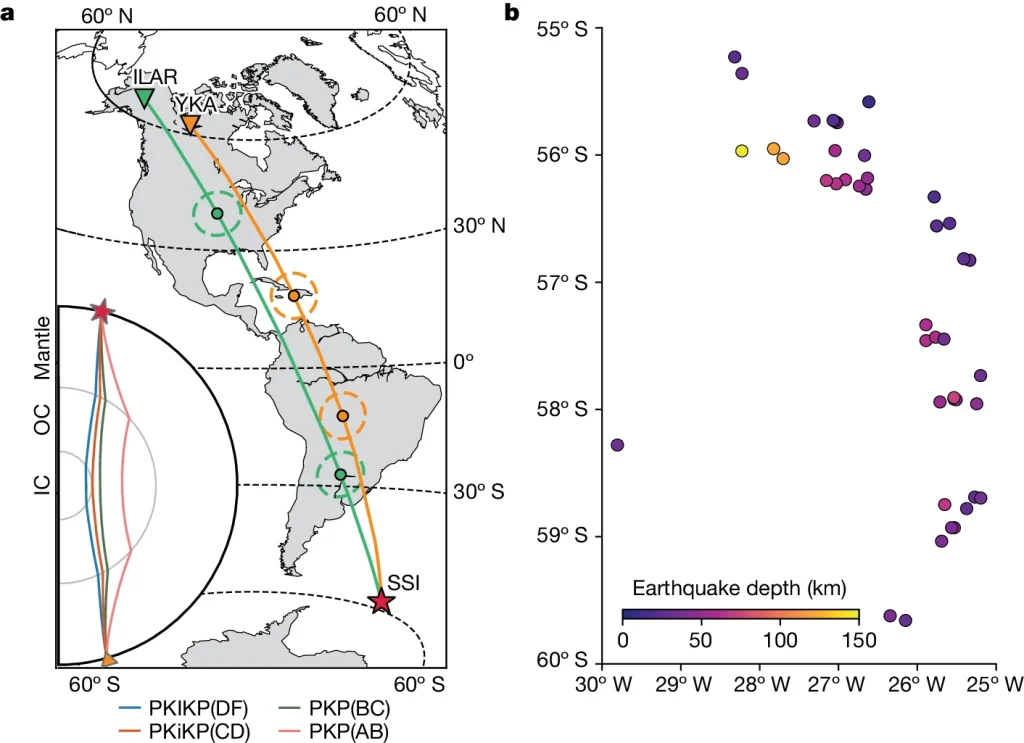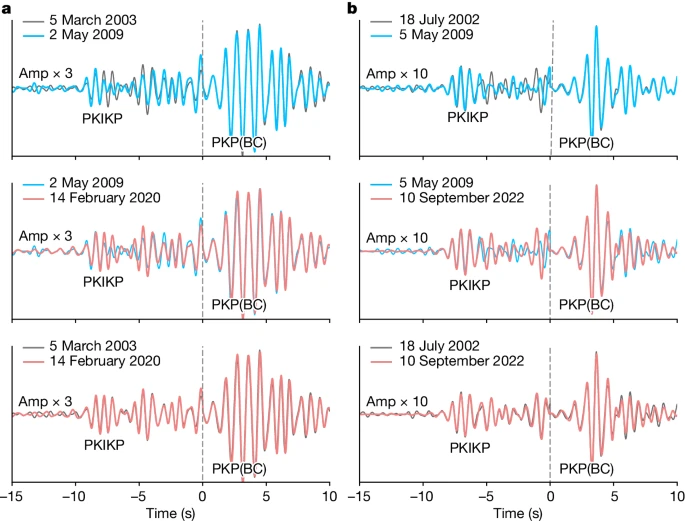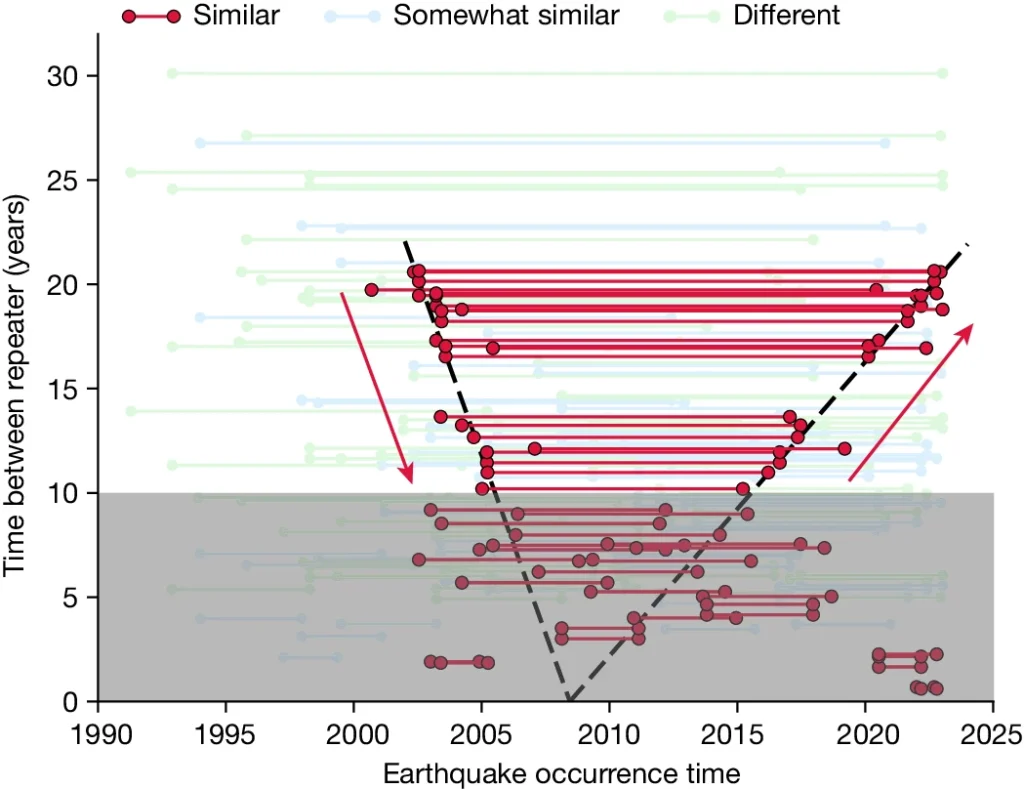A recent study published in Nature has unveiled surprising findings about the Earth’s inner core, revealing that it does not rotate uniformly as previously thought. Instead, the core exhibits a back-and-forth rotational pattern, challenging long-held assumptions about its behavior and interaction with other layers of the Earth.

The researchers analyzed seismic data from 143 pairs of repeating earthquakes, known as doublets, occurring between 1991 and 2023. These doublets allowed scientists to track changes in the travel time of seismic waves passing through the inner core. By comparing these time shifts, the researchers detected variations in the core’s rotation speed and direction over the past few decades.

From 2003 to 2008, the inner core was found to be in a phase of super-rotation, spinning faster than the Earth’s mantle and crust. This period of accelerated rotation was followed by a dramatic shift, where the inner core began to decelerate and even reverse its rotational direction. This unexpected finding indicates that the core’s rotation is not constant and is influenced by complex interactions with the outer core and mantle.

The study’s lead author, Xiaodong Song from Peking University, emphasized the significance of these findings in understanding the Earth’s inner dynamics. “The inner core’s rotation is a crucial aspect of the geodynamo, the process that generates Earth’s magnetic field,” Song explained. “Our observations suggest that the core’s rotation is more variable than previously believed, which has important implications for our understanding of the geodynamo and the Earth’s magnetic field.”

The Earth’s magnetic field, generated by the movement of molten iron in the outer core, plays a vital role in protecting the planet from harmful solar radiation. The inner core’s rotational changes could influence the behavior of the outer core and, consequently, the geodynamo. Understanding these interactions is essential for predicting changes in the magnetic field and its potential impact on life on Earth.

While the study provides groundbreaking insights, it also raises new questions about the mechanisms driving the inner core’s rotational variations. The researchers suggest that the interactions between the inner core, outer core, and mantle are more complex than previously thought. Further research is needed to develop comprehensive models that can accurately represent these dynamics.

The study’s findings were made possible by advancements in seismic technology and data analysis. By leveraging high-quality seismic data and sophisticated algorithms, the researchers were able to detect subtle changes in the inner core’s rotation. These techniques open new avenues for exploring the Earth’s interior and understanding its dynamic processes.

The study represents a significant step forward in our understanding of the Earth’s inner core and its role in the planet’s dynamics. As researchers continue to explore this new frontier, they will uncover more about the intricate processes that govern the Earth’s interior. This knowledge will enhance our ability to predict and respond to changes in the Earth’s magnetic field, ultimately contributing to a better understanding of our planet’s complex systems.

For more details, you can access the full article here.





